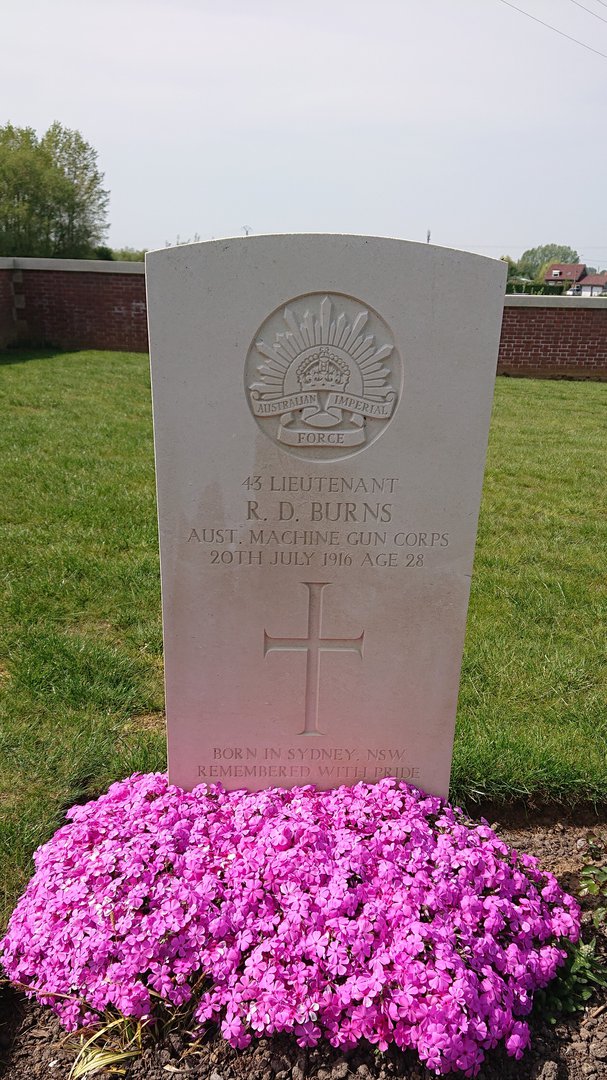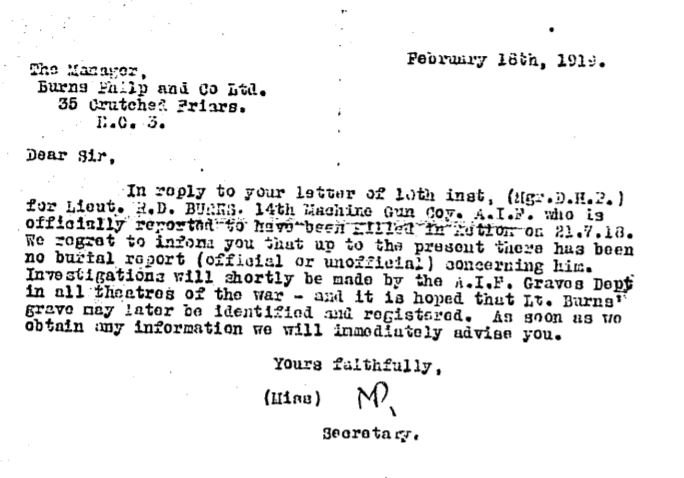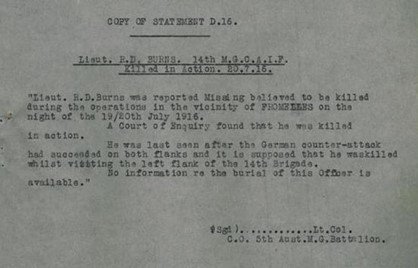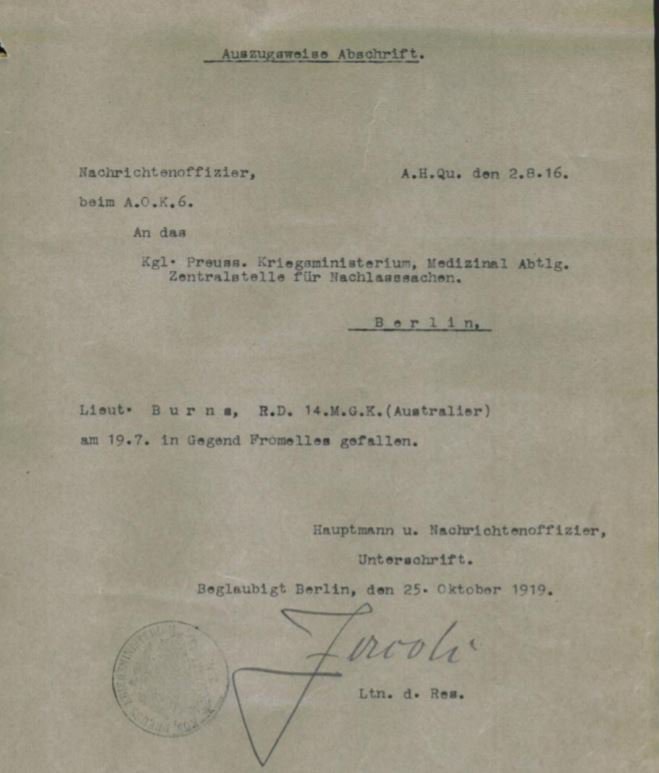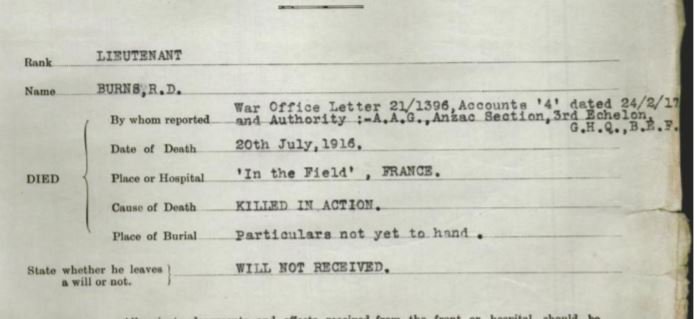The German Death List (GDL)
With thanks to Jim Munro and Royce Atkinson for their imput into this article.
What is the German Death List?
The German Death List (GDL) refers to a group of names of Allied soldiers killed during the Battle of Fromelles, compiled by the German Army and transmitted via the Red Cross in 1916/1917.
In accordance with the Geneva Conventions, German soldiers documented the identity of captured or killed enemies, buried the dead where possible, and sent personal effects and identity tags back through the appropriate channels — from the German Red Cross, through the International Committee of the Red Cross (ICRC) in Geneva, to the British Red Cross in London, and finally to the Australian Red Cross and the relevant military authorities.
This process led to the creation of the German Death List — a document that has since become central to understanding who may be buried in the mass graves at Pheasant Wood.
How Was the GDL Rediscovered?
A small group of researchers in Australia had begun to uncover the fate of Australia’s missing soldiers from Fromelles, they first came across references to the German Death List while analysing Red Cross Wounded and Missing files held at the Australian War Memorial. They found that several soldiers' files mentioned a German source confirming their deaths — but the full list itself had yet to be located.
This spurred an international archival search, including:
- The Bavarian State Archives in Munich (where the German Army’s federated units stored their own war records)
- The ICRC Archives in Geneva, which held over 20 million records from World War I, mostly untouched since 1918
- The British Red Cross Archives in London
- Surviving Australian service records, stored an the National Archives.
It was British historian Peter Barton, commissioned in 2007–2008, who ultimately accessed relevant ICRC files in Geneva, confirming that the Germans had passed on the names of many soldiers who fell at Fromelles.
What Did the GDL Contain?
The German Death List documented identified Allied soldiers who died behind German lines, particularly those who had breached German trenches during the failed assault of 19–20 July 1916.
These names matched soldiers:
- Whose identity discs had been returned via the Red Cross
- Whose death was recorded in German files or Red Cross Vouchers
- Who were not accounted for in Commonwealth War Graves burials or known cemeteries
However, the GDL did not include soldiers whose identities were unknown to the Germans — meaning soldiers stripped of ID, or never documented, would not appear.
Building the Working List
Using the GDL and cross-referencing it, historians and volunteers began building what became known as the Working List — a group of soldiers most likely buried at Pheasant Wood. The list was shared with the Fromelles Project Group Historians Round Table, convened by Major General Mike O'Brien in Canberra in November 2008.
Through these efforts:
- An initial list of 175 names was compiled
- Peter Barton’s Geneva archive research added 13 more, bringing the list to 191 names by early 2009.
Criteria for Inclusion on the GDL Working List
Each soldier on the GDL Working List had one or more of the following:
- A name recorded on a German Death List
- A German Death Voucher or confirmation within Red Cross or Service files
- Evidence their ID disc was returned via the Red Cross
- Supporting evidence (statements, records, burial references) confirming death in German-held territory at Fromelles
Source: Lycett, T. & Playle, S. (2013). “Fromelles: The Final Chapters”, p.153.
Limitations and Discoveries Beyond the GDL
The German Death List was not exhaustive. Since the start of DNA identification work, Soldiers not included on the GDL or Working List have been identified via DNA and supporting evidence, proving the Germans did not account for every soldier buried.
Today, the GDL continues to play a critical role in:
- Tracking identification progress
- Prioritising historical and genealogical research
- Helping to find the final 70 soldiers not identified to date (2025)
In accordance with the Geneva Convention, German soldiers recorded the details of enemy soldiers killed or captured, afforded the enemy dead appropriate burial and repatriated identity tags and personal effects through the Red Cross.
The German Death List was transmitted from the German Army, through the German Red Cross to the International Red Cross in Geneva, to the British Red Cross in London and on to the Australian Red Cross for liaison with the respective Armies
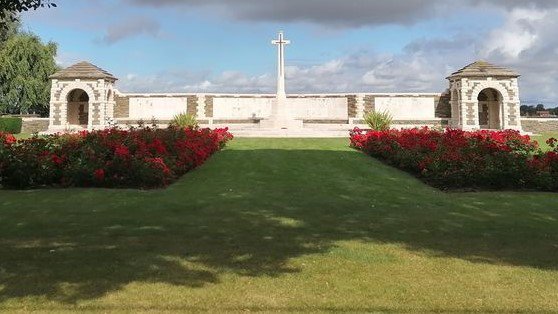
VC Corner
When Lambis Englezos was trying to establish whether some Australian soldiers who had been killed in the Battle of Fromelles were unaccounted for in burial records, he started with the numbers and lists in Robin Corfield’s Don’t Forget me Cobber and then worked through the Australian Red Cross Wounded and Missing Enquiry Bureau files (ARCW&M files) to develop a list based on the soldiers with no known graves listed at VC Corner and at Villers Bretonneux less those “unknown” burials at surrounding cemeteries. He found that the GDL document is referred to in records of several Australian soldiers killed in the Battle of Fromelles, and so he began a search for the GDL, of which a definitive list of the 250 soldiers buried at Pheasant Wood has yet to be located.
Each of these organisations that handled the German Death List kept records of these informational and material transfers. Hence there were archives of the Bavarian Regiment in Munich (The German Army was composed of the Armies of the federated States that each kept their own records), the German Red Cross, the International Red Cross in Geneva, the British Red Cross and British Army in London, the Australian Red Cross Wounded and Missing Enquiry Bureau files in Australia and the Australian Army records.
The WW1 British Army service records having being damaged by bombing during the Blitz of 1940 that set ablaze the storage facility in London where the bulk of the papers were held, and many of the records, if not destroyed outright, were badly fire and / or water damaged.
The Bavarian archives in Munich consisted of 27km of archive shelves, similarly, the International Red Cross archives in Geneva contain the records of more than 20 million soldiers and had virtually not been touched since the Armistice in 1918 and apparently had not been searched for the GDL until British historian Peter Barton was commissioned to do so in 2007 and 2008.
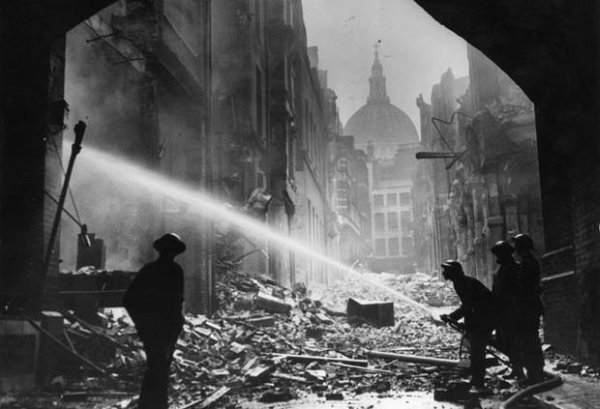
Some the Red Cross Wounded and Missing Enquiry Bureau files of Australian soldiers killed in the Battle of Fromelles contain German Death Vouchers and so Lambis and Team commenced trying to re-build the list. Tim Lycett and Sandra Playle in a collaborative approach, built upon the list developed by Lambis and the Friends of the 15th Brigade with Sandra researching and preparing initial family histories and Tim concentrating on researching the service related records and seeking out descendants. This resulted in a Working List of 175 names of soldiers thought to be interred at Pheasant Wood.
These lists were extended, refined and validated through several processes and then scrutinised by the Australian Fromelles Project Group “Historians Round Table” meeting convened at the Australian Army Headquarters in Canberra on Tuesday 25 November 2008 by Major General Mike O’Brien.
Following the sharing of information, reconciliation of the alternative lists of Australian soldiers thought to be interred at Pheasant Wood took place to determine the working list. This clarified that 178 Australian soldiers should be included in the working list. Subsequent research resulted in a further 13 names being added to the Working list in February 2009 as a result of searching of the International Red Cross archives in Geneva by British historian Peter Barton, bringing the list to 191 names.
Each of those names on the list had:
- The name of the soldier was recorded as having appeared on a German death list;
- The location of German death vouchers in a soldier’s Service Record or ARCW&M file indicated he fell at Fromelles;
- The soldier’s identity disc was noted as having been returned from Germany; and
- Any other evidence existed that strongly suggested that the soldier died in the German trenches.[1]
[1] Described Fromelles: the Final Chapters, Tim Lycett and Sandra Playle, 2013 pp153
As the GDL is a list of the names confirming soldiers who died at Fromelles and whose ID tags were returned to the Australian Army, by the German Army and via the Red Cross, it does not include the names of soldiers buried by the Germans whose identity was not known to them. So far 36 soldiers whose names were not of the Working List (or GDL) have been identified by DNA matching with relatives and other supporting evidence.
The list is used to monitor the progress of the identification process as well as documenting those soldiers, most likely to being identified.
With 84 soldiers remaining to be identified, all with DNA profiles and the names 67 of these known, DNA matching with relatives is a major focus. However, despite years of research, and the finding of donors, some of the GDL soldiers have not been identified and further research and or other explanations will be required.
Lieutenant Robert David Burns
- An example of how soldiers are added to the "Working List"
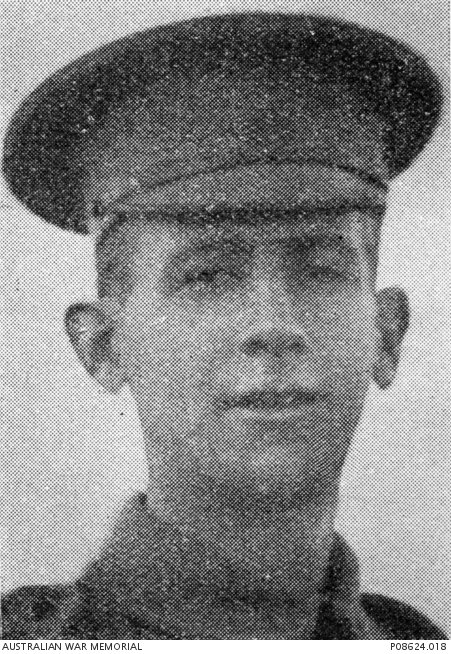
Lt. Robert David Burns was reported as “MISSING” on 22 July and his name “placed on the seconded list”. By 31 July, the 14th Brigade Diary records his status was “WOUNDED and MISSING”. The Burns family was notified by cable that Robert was missing.
An index card in his Australian Red Cross Wounded and Missing Enquiry Bureau file dated 29 November 1916 records that the name of Lieut. Robert David Burns of 14 MGC AIF, previously reported Missing, appeared on German Death list dated 4-11-1916.
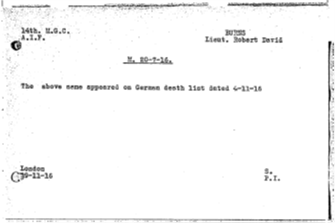
A letter was then sent to Mrs Ernest (May) Brooks on 1 December 1916. Mary Margaret (May) Burns, daughter of James and his first wife Mary (nee Ledingham), was the step-sister of Lt. Robert Burns. She married Ernest Brooks at Parramatta in 1899 and was living in London and was to be contacted if Robert became a casualty.
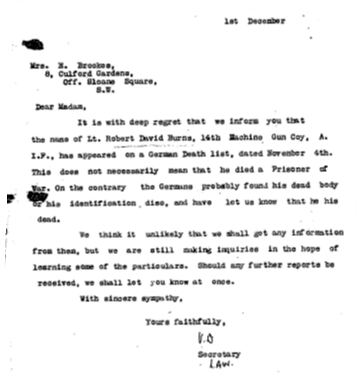
The German Death list dated 4-11-1916 was submitted as evidence at a Court of Inquiry and the British War Office on 24 February 1917 advised the AIF Administrative Headquarters that Lieutenant R. D. Burns was Killed in in the vicinity of Fromelles, 20 July 1916.
On 13 March 1917, Lieutenant Robert Burns’ identification disc was received in London and despatched to his family 8 days later.
His Service Record also contains a copy of his ‘Death Voucher’, although it is not noted when or how it was received, but may have accompanied his Identity Disk.
The Australian Red Cross Wounded and Missing Enquiry Bureau files were also updated. An index card dated 29 March 1917 records that Lieut. Robert Burns, previously reported Missing is now reported by the AIF Headquarters as Killed in Action 20-7-16. It also shows a draft of advice dated 31 March 1917 to Mrs Ernest (May) Brooks to that effect.
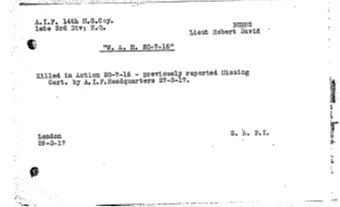
The family was officially notified of Lieutenant Robert Burns’ death on 26 March 1917 by cable with a letter of confirmation following on 2 April 1917 and his Service Record was amended on 11 April 1917. Despite the detail provided in the Court of Enquiry decision and recorded in his Service Record, no details of the location or circumstances of his death were provided to the family. This lack of detail was to cause confusion and concern to the Burns family until early 1920.
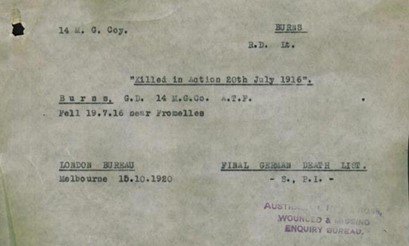
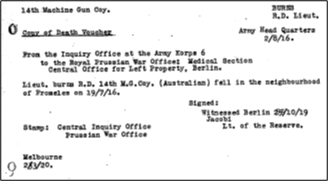
Thus Robert David Burns was added to the Working List. In 2008 a burial ground was located at Pheasant Wood containing the bodies of 250 British and Australian soldiers including Lt Burns. All of the remains were reburied in the newly created Fromelles (Pheasant Wood) Military Cemetery. At the time of the official dedication of the new cemetery on 19 July 2010, ninety-six of the Australians, including Lt Burns, had been identified through a combination of anthropological, archaeological, historical and DNA information.
Remembered with Honour.
